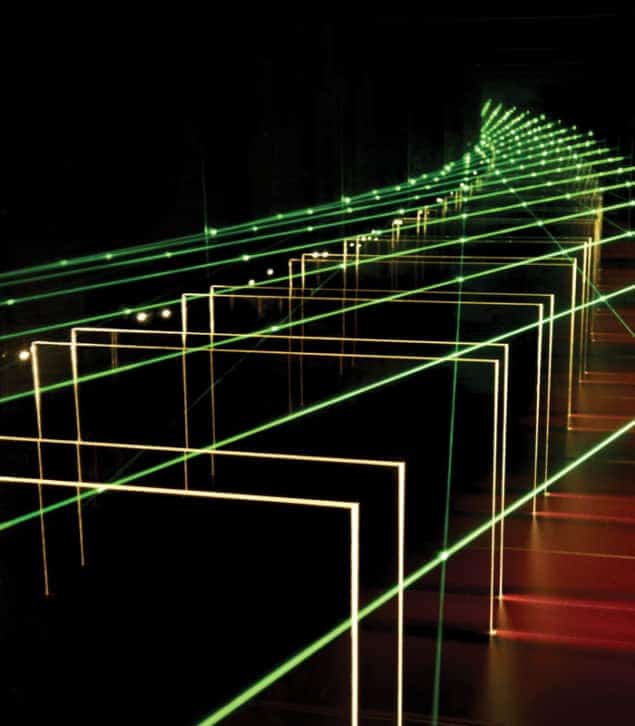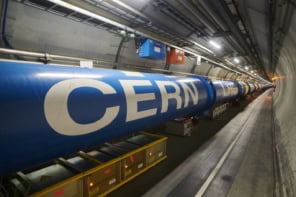
A physical phenomenon that is widely used to slow and store pulses of light in clouds of atoms has been seen for the first time in a system of nuclear-energy levels. The breakthrough has been made by a team of physicists in Germany that has seen evidence for the phenomenon, known as electromagnetically induced transparency (EIT), as X-rays pass through nanometre-scale layers of iron. The researchers think their method, which is also the first to achieve EIT using just two energy levels rather than the usual three, could lead to the development of devices for controlling X-rays, which is currently very tricky to do.
EIT occurs in special media that do not usually transmit light at a certain wavelength but can be made transparent by applying a second “control” beam of light at a slightly different wavelength. If this control beam is switched on and off at just the right time, EIT can been used to slow down a pulse of light so it is effectively stored in the medium for a second or more.
EIT requires that atoms within the medium to have a specific configuration of three energy levels in which transitions between one specific pair of levels are forbidden. While such three-level configurations can be found in many atomic systems, they are not readily available in nuclear systems. To get round this problem, Ralf Röhlsberger and colleagues at the DESY lab in Hamburg have devised a way to make a two-level nuclear system behave like a three-level system suitable for EIT. The researchers also hope that similar techniques could be applied to other two-level systems such as quantum dots.
Iron-57 layers
The experiment comprises two 2 nm-thick iron layers sandwiched between two platinum mirrors. The mirrors themselves are 45 nm apart and the cavity they create supports a standing wave of X-rays. One of the iron layers is positioned at a peak of the standing wave and the other at a trough. The layers are made of the isotope iron-57, which has a two-level nuclear transition at an energy of 14.4 keV. This corresponds to the absorption and emission of a hard X-ray photon. In the standing wave, however, the upper level of the nuclei in the peak is shifted relative to the upper level of the nuclei in the trough – thereby providing a three-level system.
The team confirmed that the system is suitable for EIT using 14.4 keV X-ray pulses generated by the PETRA III synchrotron at DESY. The researchers looked at two different configurations. In the first, the pulses enter the cavity and then pass through the iron layer in the trough of the standing wave, followed by the layer in the peak. In the other configuration, the pulses pass through the peak layer first. In the latter situation, much of the intensity of the pulse is reflected back from the system – which is what is expected from a process called nuclear resonant scattering that is related to the transition at 14.4 keV.
However, in the configuration where the pulse strikes the trough layer first, there is a sharp dip in the reflectivity – which means that, together, the two iron layers have become transparent to X-rays that they would normally reflect. This, according to Röhlsberger and colleagues, is evidence of EIT.
No control pulse needed
Although the creation of a transparent window shows that EIT is occurring in the system, it is unlike conventional EIT because it does not involve the application of a control pulse. Instead, the electromagnetic interaction between the two iron layers plays the role of the control pulse.
Creating “slow X-rays” using their system should also be possible, according to Röhlsberger. Indeed, he told physicsworld.com that the system could be used to create delay lines for X-rays – something that is currently very difficult to achieve. This new ability to manipulate X-rays could lead to the radiation being used in quantum-information systems, believes Röhlsberger. X-rays are attractive for this application because, unlike visible photons, X-ray photons can be detected at near 100% efficiency. One application could be creating experiments that test possible loopholes in quantum entanglement that are related to detector efficiency.
Röhlsberger also believes that the technique could be used to achieve EIT in optical systems that do not readily have the appropriate three levels – such as quantum dots.
The research is described in Nature.



